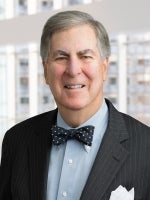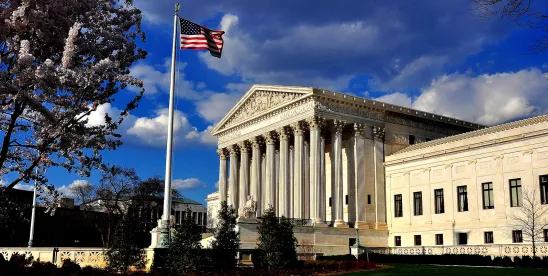Today, an evenly divided 4–4 U.S. Supreme Court, with Justice Barrett having recused herself, decided in Oklahoma Statewide Charter School Board v. Drummond to leave in place the holding of the Oklahoma Supreme Court blocking an effort in that state to create the nation’s first faith-based charter school.
This tie leaves open the question of whether states with taxpayer-funded charter school programs are constitutionally required to incorporate religious institutions. The one-line per curiam order gives no indication of how the Justices voted in the case, although the Chief Justice’s questioning during the oral argument—noting that governmental oversight of a charter school is a far greater connection to religion than merely appropriating money from which the school benefits—suggests that he joined the three jurisprudential liberals.
Justice Barrett’s recusal is attributed to her friendship with an advisor to the Catholic school at the center of the case, and leaves open the question of whether she would participate in a future case raising the establishment issue. Note that both the Chief Justice and Justice Barrett are practicing Catholics. We have some evidence of what the Chief Justice thinks with respect to the involvement of government in religious schools, but we don’t yet know Justice Barrett’s view.
Kousisis v. United States, on the other hand, was anything but a tie. All the Justices agreed (though Justices Thomas, Gorsuch, and Sotomayor concurred in whole or in part) with the opinion of Justice Barrett that a defendant who induces a victim to enter into a transaction under materially false pretenses may be convicted of federal wire fraud even if the defendant did not seek to cause, and did not cause, economic loss to the victim. Here, the petitioners gained a Pennsylvania public painting contract by falsely representing that they would work with a qualified disadvantaged business. This lie, however, did not cost the Commonwealth of Pennsylvania anything extra. The Supreme Court held that to prove wire fraud, the crime charged, a defendant must be shown to have “engaged in deception and had money or property as an object of his fraud.” However, it doesn’t follow that a federal fraud conviction cannot stand unless the defendant sought to cause the victim net pecuniary loss.
In a tour-de-force analysis of statute, precedent, and, particularly, common law, Justice Barrett explained that, besides the fact that the statute in question does not mention economic loss, the essence of actionable fraudulent-inducement theory is that a victim who might not have suffered any monetary loss is nevertheless injured by getting something other than what he or she has bargained for. In this case, the Commonwealth lost the benefit of achieving its policy aim of the inclusion of disadvantaged businesses. This theory is consistent with the statutory text, the Court’s precedents, and, most of all, a lengthy common law history.
The Barrett majority opinion and Gorsuch concurrence are particularly well written. Both ought to be taught in law schools with respect to the sources of law as well as judicial process and decision-making.
Finally, the Supreme Court has just issued an order with respect to presidential power over the tenure of members of multi-member federal agencies, holding as follows:
The Government has applied for a stay of orders from the District Court for the District of Columbia enjoining the President’s removal of a member of the National Labor Relations Board (NLRB) and a member of the Merit Systems Protection Board (MSPB), respectively. The President is prohibited by statute from removing these officers except for cause, and no qualifying cause was given. See 29 U. S. C. §153(a); 5 U. S. C. §1202(d). The application for stay presented to THE CHIEF JUSTICE and by him referred to the Court is granted. Because the Constitution vests the executive power in the President, see Art. II, §1, cl. 1, he may remove without cause executive officers who exercise that power on his behalf, subject to narrow exceptions recognized by our precedents, see Seila Law LLC v. Consumer Financial Protection Bureau, 591 U. S. 197, 215−218 (2020). The stay reflects our judgment that the Government is likely to show that both the NLRB and MSPB exercise considerable executive power. But we do not ultimately decide in this posture whether the NLRB or MSPB falls within such a recognized exception.”
Not only does this order presage the result with respect to the NLRB and MSPB, but it opens for examination whether the Federal Reserve Board should be treated similarly. The government has argued that the Federal Reserve is an exceptional agency, toward which the president’s power should be limited. The question now is whether the government will stick by this concession.




 />i
/>i

